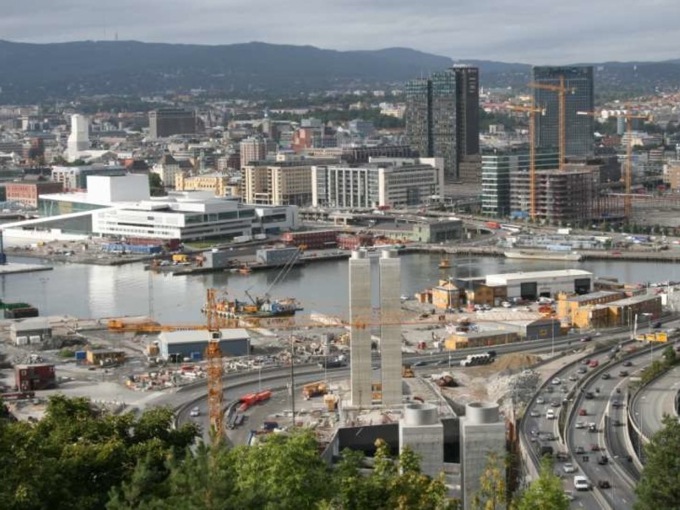Oslo / Main characteristics
Oslo is the oldest of the Scandinavian capitals, and its history goes back to 1000 years ago, when the first settlements were built at the inlet of the Oslo fjord. It is the regional capital, key port, regional transport hub, tourist centre, scientific, and academic centre.
The geographical area of Oslo is 450 km2. 2/3 of the area is green, either as protected forest or as green recreational areas. The city centre is surrounded by woods, lakes and 40 islands in the fjord. The city has a blue-green image, as it is surrounded by the blue Oslo fjord and green hills and forests.
As of 1.1.2012 the municipality of Oslo has a population of 613 285 inhabitants. The Oslo region has 925 242 inhabitants (1.1.2012). The population currently increases at record rates, making Oslo the fastest growing city in Europe. Most dwellings in Oslo are apartments; these are concentrated in a few dense areas while other types of dwellings such as single family houses and townhouses dominate the landscape.
In 4th quarter 2010, 426 124 people had Oslo as their place of work. The main job sectors are: shipping industry, information technology, telecommunications and multimedia, offshore and engineering activities, biotechnology and pharmaceuticals. The City of Oslo employs approximately 43 000 people. At the end of September, 11 056 people registered as unemployed in Oslo. This is an increase of 292 persons compared with the same month the year before. 3.2 % of the labour force in Oslo is now registered as completely unemployed. Unemployment in Oslo is 2 % higher than one year ago, but remains low compared to the rest of Europe. The average household income was NOK 362 000 in 2010 (45 250 euro).
